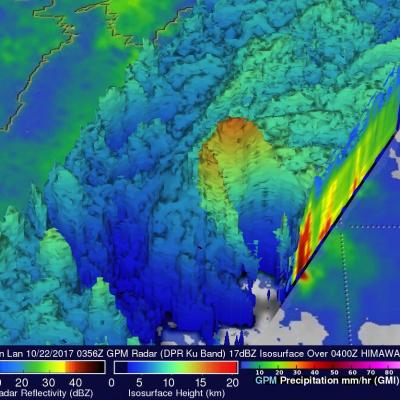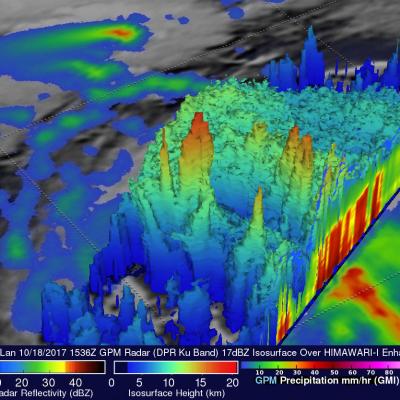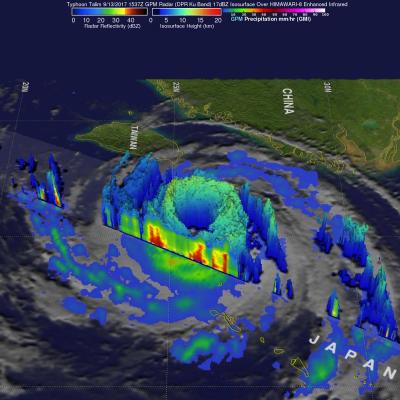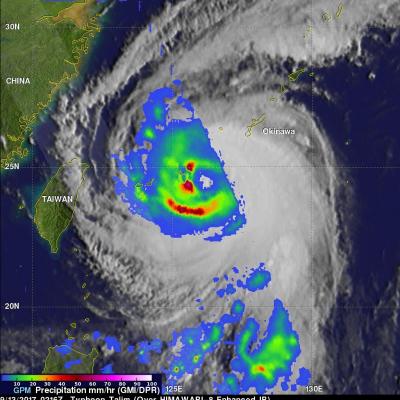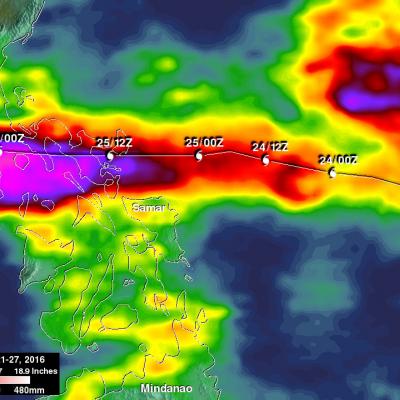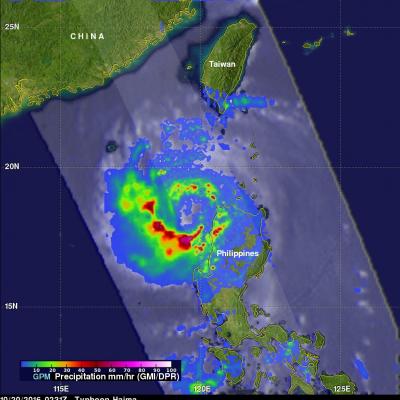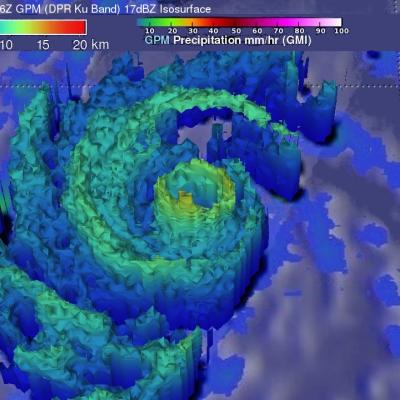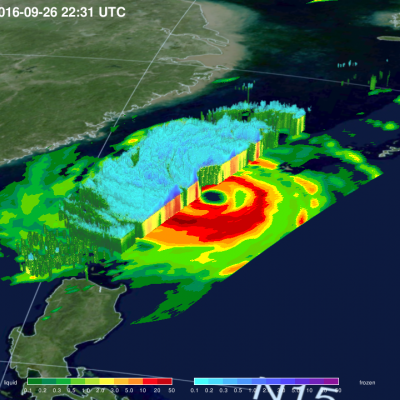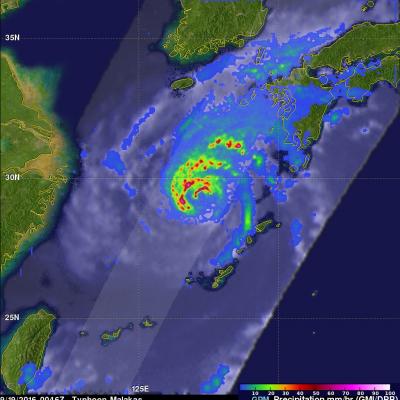GPM Examines Deadly Typhoon Lan
Typhoon Lan caused flooding, landslides and the death of at least seven people when it hit Japan early Monday morning. The powerful typhoon was accompanied by high winds and extremely heavy rainfall. Rain totals of 800 mm (31.5 inches) were reported in parts of south central Honshu. Wind speeds of over 106 kts (121.9 mph) were also reported. On October 22, 2017 at 0556 UTC the "core" satellite of the Global Precipitation Measurement (GPM) mission had an excellent view of Lan as the typhoon was approaching Japan. Data collected by GPM's Microwave Imager (GMI) and Dual-Frequency Precipitation


